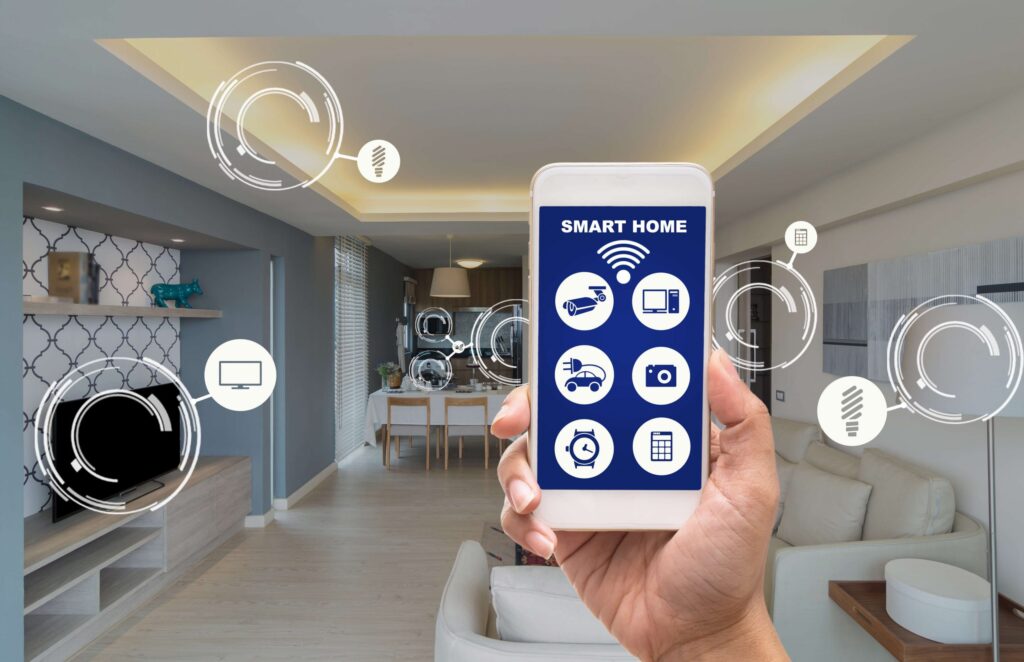Imagine a home that anticipates your needs, enhances your security, and simplifies your daily routines. This isn’t a futuristic fantasy; it’s the reality offered by smart home systems. These interconnected devices and software work together to create a seamless and intelligent living environment, offering a level of convenience and control that was once unimaginable. If you’re looking to upgrade your lifestyle and embrace the future of living, understanding the world of smart home systems is the first step.
What Exactly Are Smart Home Systems?
At its core, a smart home system is a network of devices – from lights and thermostats to security cameras and door locks – that are connected to a central hub or platform. This connection allows you to control and automate these devices remotely, often through a smartphone app, voice commands, or even pre-set schedules. The beauty of these systems lies in their ability to communicate with each other, creating a truly integrated experience. For instance, your smart thermostat could adjust the temperature based on your location as detected by your smartphone, or your smart lights could automatically turn on when your smart lock senses you’ve arrived home.
The Myriad Benefits of Embracing Smart Home Technology
The appeal of smart home systems extends far beyond mere novelty. They offer a wealth of practical benefits that can significantly improve your quality of life:
- Enhanced Convenience: Imagine controlling your lights, adjusting your thermostat, and even starting your coffee maker all from the comfort of your bed. Smart home systems offer unparalleled convenience, streamlining everyday tasks and freeing up your time.
- Increased Security: Smart locks, security cameras, and motion sensors provide a robust security network for your home. You can monitor your property remotely, receive alerts for unusual activity, and even control access to your home from anywhere in the world.
- Energy Efficiency: Smart thermostats learn your preferences and adjust automatically to optimize energy consumption, potentially leading to significant savings on your utility bills. Smart lighting can also be programmed to turn off automatically when rooms are unoccupied.
- Improved Comfort: Create the perfect ambiance with smart lighting that can adjust brightness and colour temperature. Maintain a comfortable temperature throughout your home with a smart thermostat that responds to your needs.
- Peace of Mind: Knowing that your home is secure and that you can monitor its status remotely can provide significant peace of mind, especially when you’re away.
- Accessibility: For individuals with mobility challenges, smart home systems can offer increased independence by allowing them to control various aspects of their home through voice commands or simple app interfaces.
Key Components of a Smart Home System
While the specific devices included in a smart home system can vary greatly depending on individual needs and preferences, some key components are commonly found in most setups:
- Smart Hub: This acts as the central brain of your system, connecting and coordinating all your smart devices. Popular hubs include Amazon Echo (with built-in Zigbee and Z-Wave), Google Nest Hub Max, and dedicated hubs from companies like Samsung SmartThings.
- Smart Lighting: Control your lights remotely, schedule them to turn on and off at specific times, and even adjust brightness and colour temperature using voice commands or an app.
- Smart Thermostats: Learn your heating and cooling preferences and adjust automatically to optimize energy efficiency and comfort.
- Smart Locks: Secure your home with keyless entry, remote locking and unlocking, and activity logs.
- Smart Security Cameras: Monitor your home remotely with live video feeds, motion detection alerts, and recording capabilities.
- Smart Plugs: Turn regular appliances into smart devices by allowing you to control them remotely and schedule their operation.
- Voice Assistants: Devices like Amazon Echo and Google Nest can act as central control points for your smart home, allowing you to control devices with voice commands.
Getting Started with Your Own Smart Home System
Embarking on the journey of creating your own smart home system doesn’t have to be overwhelming. Here are a few tips to get you started:
- Identify Your Needs: What are your primary goals for implementing a smart home system? Are you most interested in security, energy savings, or convenience? Identifying your priorities will help you choose the right devices.
- Start Small: You don’t have to outfit your entire home with smart devices all at once. Begin with a few key components, like a smart hub and smart lighting, and gradually expand your system as needed.
- Research Compatibility: Ensure that the devices you choose are compatible with your chosen smart hub or platform. Look for devices that use common communication protocols like Wi-Fi, Zigbee, or Z-Wave.
- Consider Your Budget: Smart home devices range in price, so it’s important to set a budget before you start shopping.
- Prioritize Security: When setting up your smart home system, take steps to secure your network and devices to protect your privacy. Use strong passwords and keep your software updated.
The Future is Intelligent
Smart home systems are no longer a niche technology; they are rapidly becoming an integral part of modern living. As technology continues to advance, we can expect even more sophisticated and intuitive smart home solutions to emerge, further enhancing our comfort, security, and convenience. Embracing the power of smart home systems today is an investment in a more intelligent and connected future for your home.







